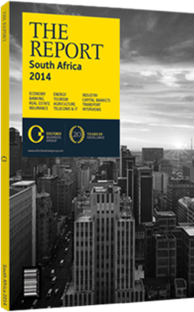OBG talks to Eddie O’Connor, CEO, Mainstream Renewable Power

Interview: Eddie O’Connor
What potential is there for renewable energy to provide capacity and reduce the power deficit?
EDDIE O’CONNOR: There is huge potential for renewable energy resources in South Africa. The country is blessed with some of the most reliable solar and wind resources on the planet, which combined could provide as much as 40 GW of new capacity by 2035 and up to 100% of the country’s electricity by 2050.
South Africa has an additional “bonus” as well, in that unlike other countries, the nation’s solar and wind production is remarkably consistent and follows the daily demand curve. This means that that independent power producers (IPPs) are able to reliably supply into the national grid when that power is most needed. That said, I would like to see the government commit to procuring 2 GW of new renewable capacity every year for the coming two decades. The Renewable Energy Independent Power Producer Procurement Programme (REIPPPP) has been very successful to date at bringing on new capacity and there is no reason why this should not continue.
There are three main reasons why the South African government would want to do this. The first is cost. The cost of energy from new wind and solar plants commissioned under the third round of REIPPPP is 25% lower than the estimated cost of new coal and will be significantly lower than new gas or a nuclear plant. The second is speed of deployment. The government has run three rounds of the REIPPPP in three years. Our three projects from round one came on-line on budget, on time and in the case of our Jeffrey’s Bay windfarm, with over 1m man-hours without a lost-time incident. The third reason is sustainability. Renewable projects require little or no water. Other power generation, primarily coal-based, uses almost 5% of all water consumed in South Africa. This is not because of old and outdated technology. The Kusile coal-fired power plant, due for commissioning soon, will use over 170 times more water per unit of power produced than any wind project.
To what extent have feed-in tariff policies helped increase the use of renewable technologies?
O’CONNOR: The feed-in tariff has been remarkably successful at bringing new renewable generation to market. The volume of generation created has driven very significant price reduction in both wind and solar technology. The cost of solar power is now equal to or less than the average cost of electricity in 19 countries around the world, including Mexico, Italy, Australia and Japan. The cost of wind power has also fallen steadily. Over the past twenty years in the US, the average price of wind power has fallen by more than 85% so that it is now equal to or less than the price of new nuclear, coal and even gas.
So, the feed-in tariff, and other schemes, have incentivised new generation, reduced carbon emissions and driven down the cost of electricity. I think that is a success story. Going forward, I expect to see a global agreement on carbon pricing at the 21st Conference of the Parties on Climate Change in 2015, and I anticipate that countries will move away from incentivising low carbon generation and instead move to a realistic price for carbon, which will see a shift to renewable power across all markets.
What are the most common challenges firms face when trying to invest in renewable energy?
O’CONNOR: All investors and developers of power plants need regulatory certainty and market access in order to invest. That includes the availability of clear title to land, the existence of a legal code for power production and access to the grid. Not every country on the continent is the same, and we are continuously reviewing our new markets using a methodology that comprises these elements. Africa has abundant renewable resources. I anticipate that in a similar fashion to the roll-out of mobile phone technology, IPPs will be providing very large amounts of electricity across markets where the incumbent, fossil-based generator simply struggles to compete.
You have reached the limit of premium articles you can view for free.
Choose from the options below to purchase print or digital editions of our Reports. You can also purchase a website subscription giving you unlimited access to all of our Reports online for 12 months.
If you have already purchased this Report or have a website subscription, please login to continue.

